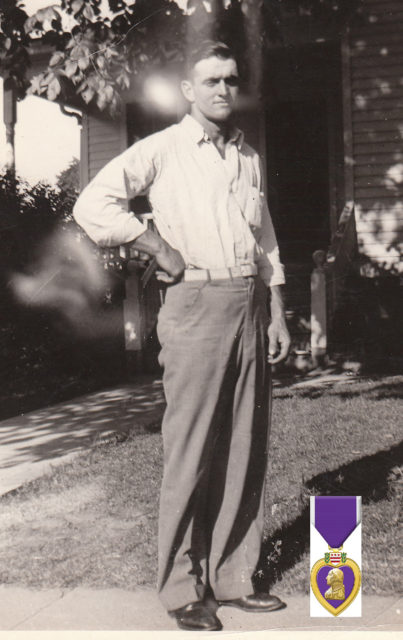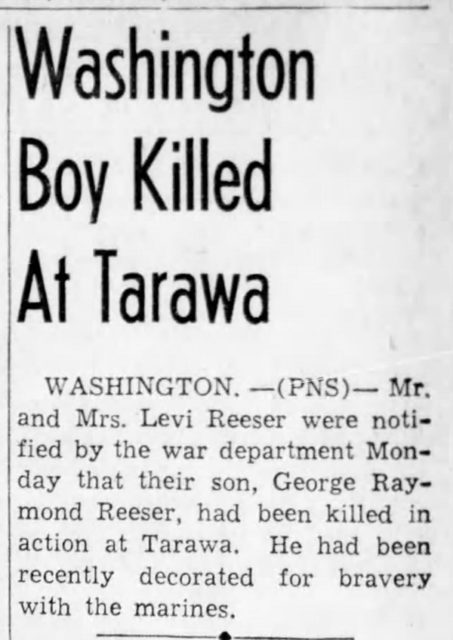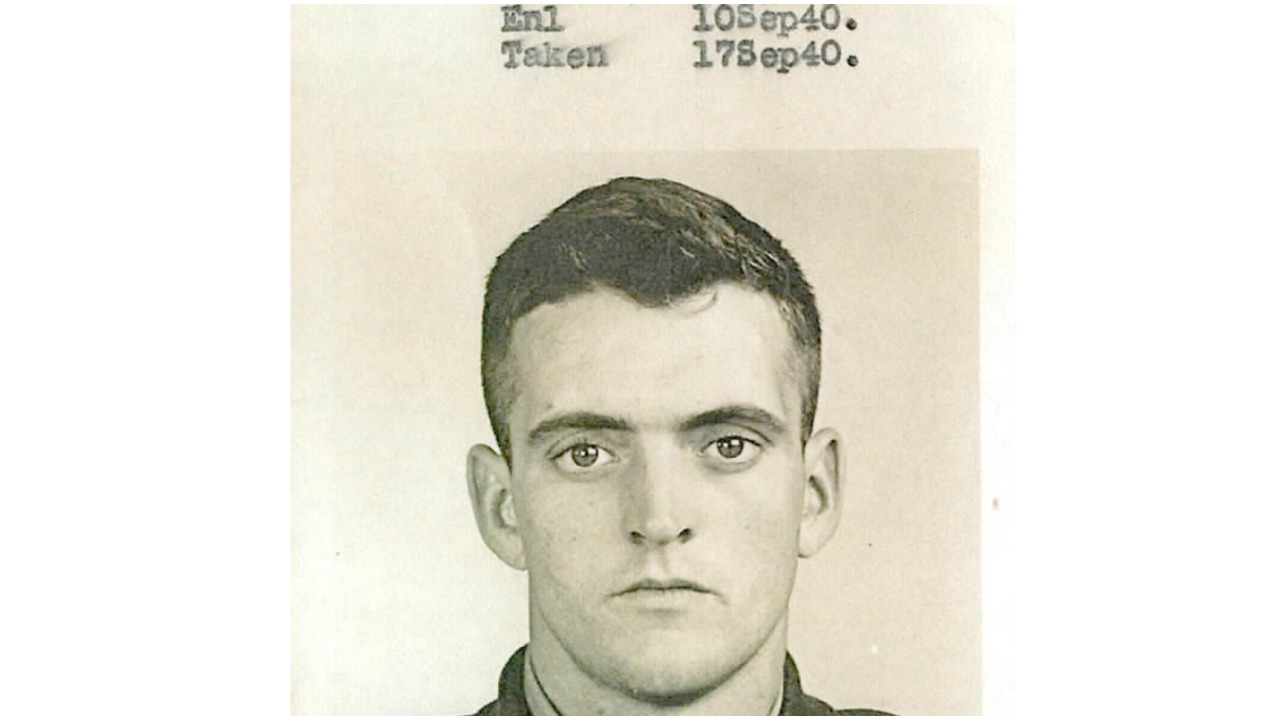The Defense POW/MIA Accounting Agency (DPAA) has announced that the remains of Marine Sgt. George R. Reeser have been identified and are being returned to his home for burial this fall.
Reeser was born in Illinois on June 3, 1918. He entered service with the Marines on September 10, 1940.
He was 25 years old in November 1943 when he landed on the island of Betio in the Tarawa Atoll in what is now known as the Republic of Kiribati.

He was serving with Company A, 1st Battalion, 6th Marine Regiment, 2nd Marine Division, as they faced strong resistance from the occupying Japanese forces. Approximately 1,000 US Marines were killed during the several days of fighting.
Reeser lost his life on November 22 – the third day of fighting. His remains were not positively identified at the time. It was reported that his body was buried in a cemetery on the island.
In 1946, US military officials began consolidating remains from the cemetery in order to return them home for burial.
At that time, around half of the known casualties could not be located. Reeser was one of those that were missing and his remains have been categorized as “non-recoverable” since 1949.
History Flight, Inc. – a non-profit organization – found what appeared to be the actual resting place of Reeser and around thirty other Marines who had been buried in a trench near where they had been killed.
The remains from that site were transferred to the DPAA laboratory in Hawaii for identification. Scientists at the lab have been working for the last decade to identify all the recovered remains.

Reeser’s remains were identified using dental records, anthropological analysis, and other material and circumstantial evidence.
He is scheduled to be buried on September 26 in Deer Creek, Illinois.
Reeser’s is one of the names on the Courts of the Missing at the National Memorial Cemetery of the Pacific with the other names of those missing from World War II. His name will have a rosette placed next to it to recognize that he has since been identified and recovered.
In the aftermath of the fighting in 1943, the surviving Marines were tasked with burying the dead. By the time they had secured their location and could turn their attention to the unpleasant task, the smell had become intense.
While the soldiers were diligent in their attempts to identify all their fallen comrades, they were also understandably anxious to finish the work quickly.
Three trenches were dug and filled with the bodies of the dead soldiers. They were marked as best as they could be given there was no material available to make a more permanent marker.
The trenches were labeled Rows A-C. A fourth row, which may have served as a “tank trap” during the fighting, was set apart from the first three row and labeled Row D.
When military officials arrived three years later to reclaim the remains of the dead soldiers, they initially had difficulty finding Rows A-C. Nothing remained of the markers that had been placed there.
Eventually they found Row B and, with some searching, were able to locate Rows A and C as well. Row D remained lost along with the 33 soldiers buried there.
Another Article From Us: USS Hershel “Woody” Williams Sets Sail for her Inaugural Deployment
In 2009, History Flight located the original location of Rows A-C and began working to find Row D. In 2019, they announced the successful location of the lost grave site and thus made it possible for Reeser to finally come home.
